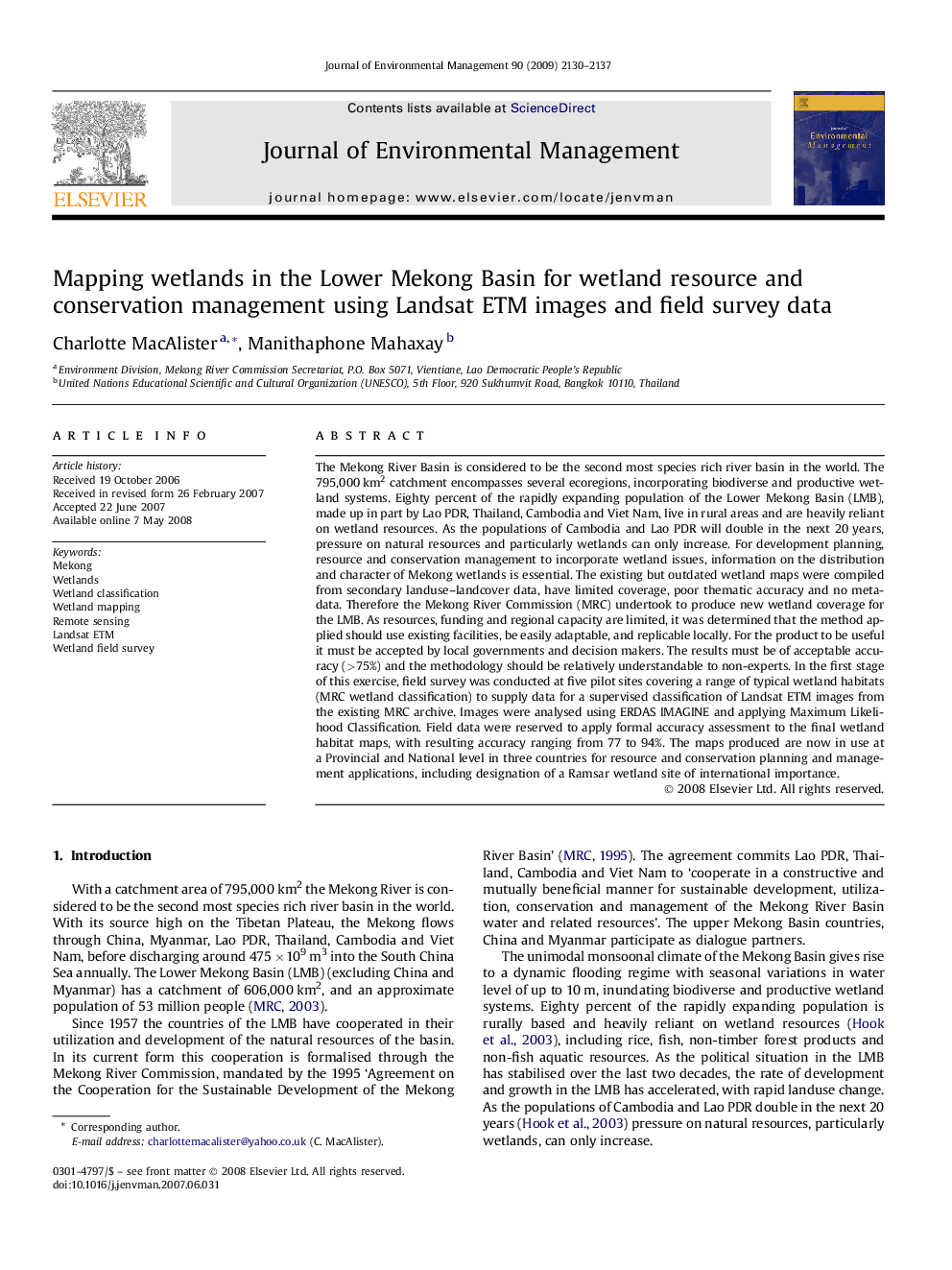| Article ID | Journal | Published Year | Pages | File Type |
|---|---|---|---|---|
| 1058175 | Journal of Environmental Management | 2009 | 8 Pages |
The Mekong River Basin is considered to be the second most species rich river basin in the world. The 795,000 km2 catchment encompasses several ecoregions, incorporating biodiverse and productive wetland systems. Eighty percent of the rapidly expanding population of the Lower Mekong Basin (LMB), made up in part by Lao PDR, Thailand, Cambodia and Viet Nam, live in rural areas and are heavily reliant on wetland resources. As the populations of Cambodia and Lao PDR will double in the next 20 years, pressure on natural resources and particularly wetlands can only increase. For development planning, resource and conservation management to incorporate wetland issues, information on the distribution and character of Mekong wetlands is essential. The existing but outdated wetland maps were compiled from secondary landuse–landcover data, have limited coverage, poor thematic accuracy and no meta-data. Therefore the Mekong River Commission (MRC) undertook to produce new wetland coverage for the LMB. As resources, funding and regional capacity are limited, it was determined that the method applied should use existing facilities, be easily adaptable, and replicable locally. For the product to be useful it must be accepted by local governments and decision makers. The results must be of acceptable accuracy (>75%) and the methodology should be relatively understandable to non-experts. In the first stage of this exercise, field survey was conducted at five pilot sites covering a range of typical wetland habitats (MRC wetland classification) to supply data for a supervised classification of Landsat ETM images from the existing MRC archive. Images were analysed using ERDAS IMAGINE and applying Maximum Likelihood Classification. Field data were reserved to apply formal accuracy assessment to the final wetland habitat maps, with resulting accuracy ranging from 77 to 94%. The maps produced are now in use at a Provincial and National level in three countries for resource and conservation planning and management applications, including designation of a Ramsar wetland site of international importance.
